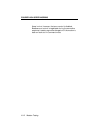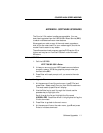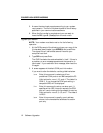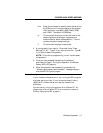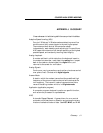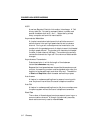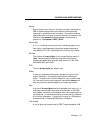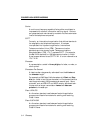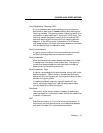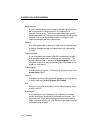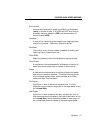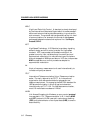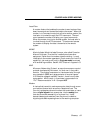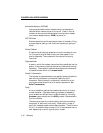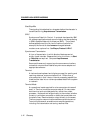
COURIER HIGH SPEED MODEMS
Glossary J-5
Cyclic Redundancy Checking (CRC)
An error-detection technique consisting of a cyclic algorithm
performed on each block or frame of data by both sending and
receiving modems. The sending modem inserts the results of its
computation in each data block in the form of a CRC code. The
receiving modem compares its results with the received CRC
code and responds with either a positive or negative acknowl-
edgment. In the ARQ protocol implemented in U.S. Robotics
high speed modems, the receiving modem accepts no more data
until a defective block is received correctly.
Data Communications
A type of communications in which computers and terminals
are able to exchange data over an electronic medium.
Data Compression
When the transmitting modem detects redundant units of data,
it recodes them into shorter units of fewer bits. The receiving
modem then decompresses the redundant data units before
passing them to the receiving computer.
Data Compression Table
A table of values assigned for each character during a call under
data compression. Default values in the table are continually
altered and built during each call: the longer the table, the more
efficient throughput gained.
If a destructive Break is sent during a call (see the &Y com-
mand), causing the modems to reset the compression tables,
you can expect diminished throughput.
Data Mode
The mode in which the fax modem is capable of sending and
receiving data files. A standard modem without fax capabilities
is always in Data mode.
DCE
Data Communication (or Circuit-Terminating) Equipment. In
this manual, the term applies to dial-up modems that establish
and control the data link via the telephone network.



